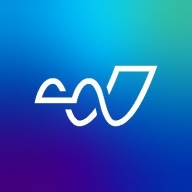

Trend Vision One and LogRhythm UEBA compete in the cybersecurity category, each offering distinct security solutions that cater to different needs. Trend Vision One seems to have the upper hand in comprehensive security features integration, but LogRhythm UEBA's affordability and strong user behavior analysis make it appealing to smaller businesses.
Features: Trend Vision One excels in comprehensive security with features such as endpoint and network detection, behavior analytics, and centralized visibility, providing end-to-end security solutions. LogRhythm UEBA focuses on user behavior analysis with innovative dashboard insights and strong threat-hunting features tailored for end-user activity monitoring.
Room for Improvement: Trend Vision One users suggest improvements in integration with other solutions, streamlining the user interface, and enhancing reporting and support response times. LogRhythm UEBA needs more extensive use case libraries, improved dashboards, and growth in its machine-learning capabilities.
Ease of Deployment and Customer Service: Trend Vision One offers flexible deployment options across public, private, and hybrid clouds, but customer service consistency varies. LogRhythm UEBA, primarily on-premises, is praised for its consistent technical support.
Pricing and ROI: Trend Vision One has a flexible credit-based pricing model that may appear complex but provides significant ROI through time savings and threat mitigation. LogRhythm UEBA is more affordable for small to medium businesses, though it may involve extra costs for cloud versions and professional services, with its licensing flexibility being a significant highlight.


LogRhythm UEBA enables your security team to quickly and effectively detect, respond to, and neutralize both known and unknown threats. Providing evidence-based starting points for investigation, it employs a combination of scenario analytics techniques (e.g., statistical analysis, rate analysis, trend analysis, advanced correlation), and both supervised and unsupervised machine learning (ML).
Trend Vision One offers comprehensive protection for endpoints, networks, and email with centralized visibility. It is valued for its attack surface management, real-time threat detection, integrated management, ease of deployment, and user-friendly interface.
Trend Vision One provides a sophisticated security platform combining endpoint, network, and email protection with features like virtual patching and advanced AI capabilities. Its centralized management and integration with platforms like Office 365 and Azure make it an attractive option for organizations needing streamlined workflows and efficient risk management. While it boasts robust integrations and ease of use, enhancements are needed in reporting, tool integration, and reducing false positives. Users call for better support infrastructure, faster response times, and improved threat intelligence capabilities. Despite some complexity, its AI and ML features significantly enhance threat detection and response.
What Features Define Trend Vision One?
What Benefits Should Users Look For?
Trend Vision One is implemented in industries that require endpoint protection, ransomware defense, and incident response, being flexible for both on-premises and cloud environments. It is used to monitor servers, networks, and endpoints, providing features like email protection, behavioral detection, and threat visibility. Organizations benefit from AI and ML, improving their security posture and response capabilities.
We monitor all Extended Detection and Response (XDR) reviews to prevent fraudulent reviews and keep review quality high. We do not post reviews by company employees or direct competitors. We validate each review for authenticity via cross-reference with LinkedIn, and personal follow-up with the reviewer when necessary.